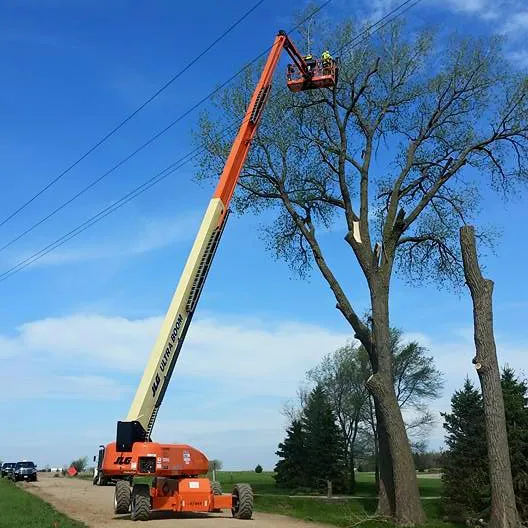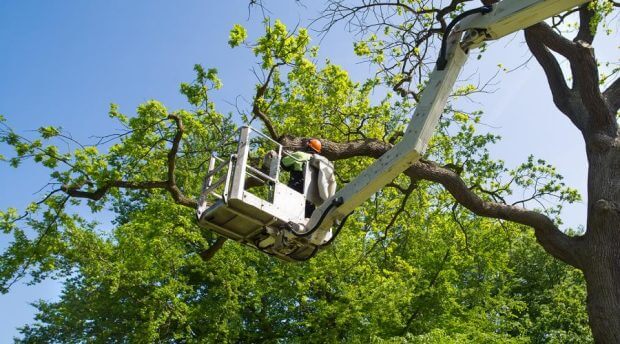
14 March, 2024
Risk-control measures in vegetation work
Risk of injuries
How can you avoid accidents during vegetation work? Being aware of the risks is the first step towards safety. The three most common types of injury when operating an AWP for tasks of this nature are:
- Electrocution: contact with or arcing from power lines
- Falls from the platform: platform occupants not using or incorrect use of personal fall protection equipment
- Hit by falling objects, such as tree branches or sections of trunk

Preventing accidents
When accidents happen in this specific type of work, they are often caused by inadequate planning, poor ground conditions, inadequate use of the machine or protection equipment, pedestrians entering work zones and weather or wildlife conditions, such extreme winds or nesting birds. These can be prevented by risk-control measures in three stages:
- Planning
- Inspection and checks
- Operation and shut down
1. Planning
To prevent this type of accidents from happening, adequate planning is essential. Make sure you know the safe set-up distance from power lines and remember to:
- Conduct and communicate proper risk and site assessments.
- Develop and adopt a safe work procedure.
- Select the correct machine for the task.
- Create a traffic management plan in case of working on or near roads.
- Identify power and communication lines and possibly involve contacting utility suppliers (in case of power lines hidden among vegetation).
- Ensure power lines are deactivated and isolated.
- Create a segregated area with a drop zone clear of the AWP base and structure, taking into account wind velocity.
- Put a ground-rescue person in place, familiarised with the AWP’s emergency lowering controls and the agreed rescue plan.
2. Inspections and checks
On top of adequate planning, regular inspection and checks during the work at height ensure the best working conditions. You should always:
- Carry out pre-use checks, reporting damage or defects.
- Plan and walk the route, as getting to and from the work site may involve manoeuvring the machine over challenging terrain.
- Reduce the risk of overturn by considering using a four-wheel-drive unit and outriggers.
- Make sure the ground can support the weight of the AWP and the load in the platform.
- Ensure the machine is set up and levelled correctly, on a firm surface, and not at risk of being struck by other vehicles or machines.
- Set up well away from edges, verges or steeply sloped banks.

3. Operation and shut down
To look back upon efficient and safe operations, make sure to:
- Always wear the correct full body harness and lanyard in boom-type AWPs and ensure these are attached to designated anchorage points inside the platform.
- Look up, look down and look around: be aware of surroundings, use continual visual observations and communicate with each other when operating.
- Pay attention to possible changes in ground conditions while operating.
- Use suitable spreader pads under outriggers and ensure pads are level, even on sloping ground.
- Take precautions to protect all occupants from chainsaws and flying debris and cut trees so that branches fall away from the platform.
When the job is done and the machine is lowered and returned to the stowed position, focus on these actions:
- Clear the AWP of sawdust and other such debris, paying particular attention to moving parts and joints, hydraulics, and machine controls.
- Was the equipment operated in extreme weather conditions? Inspect and maintain accordingly to ensure all systems remain safe.
- Check for damage after use. Damaged machine? Immediately isolate tag and report to the owner.
- Handle and store fuel and other flammable liquids safely, away from the platform.